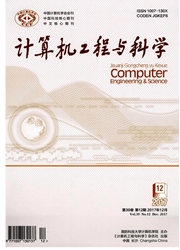

 中文摘要:
中文摘要:
合成孔径雷达fSyntheticapertureradar,SAR)图像因为相干斑现象和目标响应的空间变化呈现出--400纹理特性,局部二进编码等局部图像特征在光学纹理描述中获得较好的结果,但光学纹理特征在描述SAR图像纹理特性中因为相干成像特性往往失效.本文在前期工作纹理特征框架的基础上,提出了一种局部重要性采样二进编码的SAR图像纹理特征fFeatureextractionbasedonlocalimportantsamplingbinary,LISBF)描述方法:首先,利用样本图像对局部采样位置进行随机自适应采样,基于重要性采样(Importantsample,IS)方法输出递归学习位置结果;然后,利用学习出的纹理重要采样点对进行二进特征编码;最后,通过映射和统计生成描述算子.该特征较固定位置采样能够获取更大范围信息,同时能通过采样避免特征维数的急剧增大;通过自适应学习重要性关键点较随机采样更容易捕捉纹理固有信息:较好地适应了SAR图像极低信噪比和斑点现象的纹理.本文将该特征用于真实图像和标准纹理库的分类研究,实验结果证明了该特征的有效性.
 英文摘要:
英文摘要:
Synthetic aperture radar (SAR) image presents properties of texture because of speckle and the spatial variability of target response. Methods of feature extraction based on local binary encoding have achieved good results and are popular with texture description in recent studies. In this paper, we make use of the framework of texture feature and propose an approach of feature extraction based on local important sampling binary encoding representation (LISBF) for SAR image classification. Firstly, use some images to sample local key points randomly and adaptively, and output the recursive learning position which is based on the important sampling method. Then, we use the learning position to form binary code. Finally, we develop the feature descriptor by mapping and statistics. This feature an provide a wider range of information than fixed location sampling and avoid the feature dimension increasing sharply by sampling. Compared with random sampling, this feature is easier to capture the texture information via adaptive learning and more fits the very low SNR and speckle of SAR image. This paper applies this feature to the classification of real SAR image and standard texture library. The effectiveness of this feature is tested and verified by the experiment results.
 同期刊论文项目
同期刊论文项目
 同项目期刊论文
同项目期刊论文
 期刊信息
期刊信息
